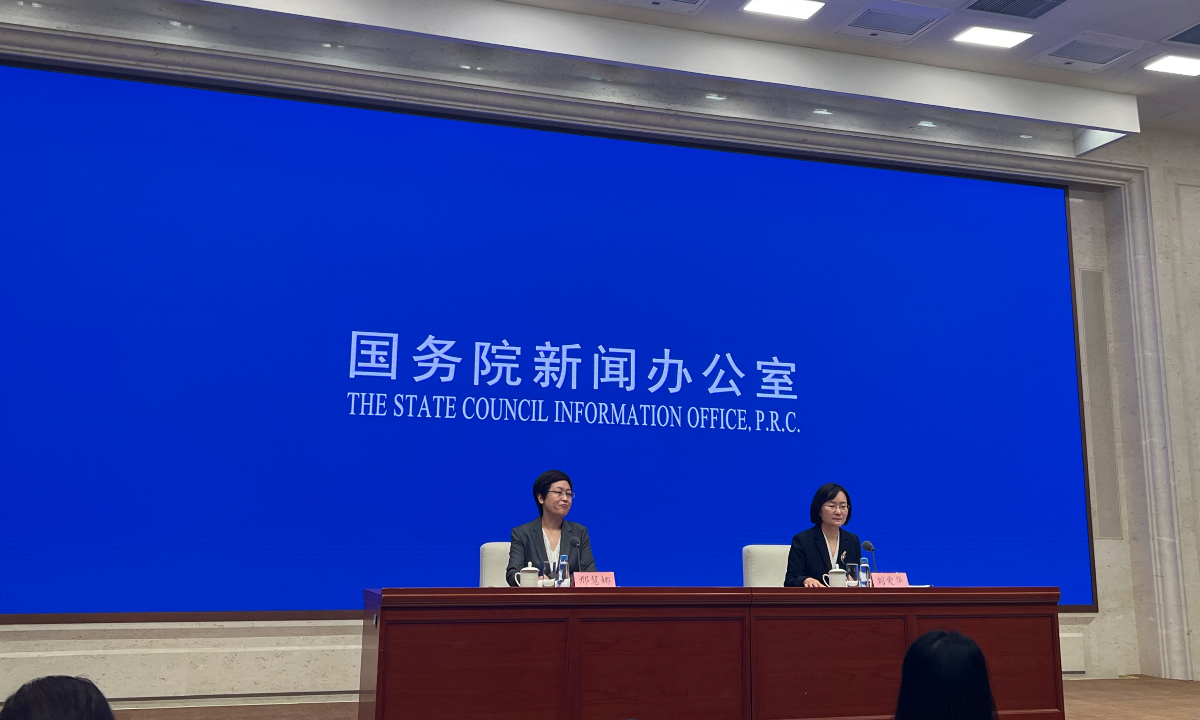China’s economy keeps on expanding in July, bolstered by retail sales, industrial output

Photo: Li Xuanmin/GT
China’s economy continued to run on the expansion trajectory in July, with the output of industrial enterprises above the designated size up by 5.1 percent year-on-year, while retail sales rose by 2.7 percent year-on-year, data from the National Bureau of Statistics (NBS) showed on Thursday.
Observers said the slew of key indexes underscored that the world’s second largest economy has been stabilizing and improving in July, after slowing down slightly in June.
The recovery momentum is fueled by a bunch of factors, the analysts noted, including the pull-up effect from the government’s more pro-growth policies, a summertime consumption peak, as well as a pick-up in high-tech manufacturing investment.
The 5.1-percent value-added industrial output growth in July compared with 5.3-percent growth recorded in June. Growth of retail sales in July gained 0.7 percentage point from the 2-percent growth rate seen in June.
In the first seven months this year, fixed asset investment rose 3.6 percent year-on-year, compared with 3.9 percent in the first six months, NBS data showed.
Observers said that the July performancereadings are largely stable and have shown some “palpable” improvement from June, the retail sales in particular, which is expected to bolster the prospect of the Chinese economy in the second half year.
“July is traditionally a peak travel season, which has led to a summer consumption boom. In breakdown, the number of domestic flights jumped in July compared with the previous month, while that of cultural and tourism-related consumption as well as catering spending also rose. The low base effect of the same period last year also providessupport,” said a research report released by China International Capital Corporation (CICC).
In July, a list of stimulus measures has been carried out to inject new impetus into the economy. Meanwhile, the convening of a set of tone-setting government meetings have sent out clear signals for the launch of more effective, strengthened measures to buttress the country’s high-quality development.
Cao Heping, an economist from Peking University, told the Global Times that fixed-asset investment has maintained stable growth in July as economic activity revved up in the aftermath of natural disasters such as flooding. State-owned enterprises, in particular, are showing a notable increase in fixedasset investmentin the period, Cao said.
Analysts also noted that investment in manufacturing has continued to gain pace in July with a rosy growth of 9.3 percent in the first seven months, and the field will likely to continue to display innate strength and resilience throughout the second half, despite sluggish investment in the real estate sector, which is undergoing a protracted correction.
The brisk export in July also bodes well for driving up the manufacturing sector investment, they added.
The July economic data showed that industrial output remained relatively high, which is also supported by strong growth in exports, Tian Yun, a veteran economist based in Beijing, told the Global Times.
Observers said that taking account of the GDP growth slowdown in the second quarter and the high base of the second half of last year, it should be acknowledged that the economy will face “considerable internal and external downward pressure” in the July-September period.
But they voiced confidence that the economy will reach the annual GDP growth goal of around 5 percent.
China’s GDP expanded 5 percent to reach 61.68 trillion yuan ($8.49 trillion) in the first half of 2024. In the second quarter, China’s GDP grew by 4.7 percent year-on-year, edging down slightly from the first quarter’s 5.3-percent growth.
Cao said that he expected the GDP growth rate to be around 5 percent over the coming months, showing a steady trend. He noted that technological advancements and consumption upgrades are poised to drive economic growth, with government support for tech and innovative companies providing a new direction for growth.
Zhao Chenxin, deputy head of the National Development and Reform Commission, China’s top economic regulator, said in July that the country has “ample room for counter-cyclical policy adjustments” in the second half of the year. He gave example of the issuance of ultra-long special treasury bonds, local government special bonds, as well as other initiatives to boost large-scale equipment upgrades and consumer goods trade-ins.
While certain policies that have been put in place show early signs of effectiveness in driving up consumption and investment, Tian expects more measures to be rolled out by the government to stabilize real estate investment.

